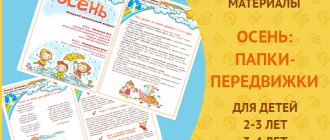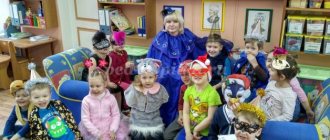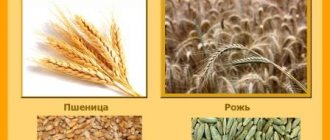Experts recommend developing a child with the help of fine arts. It is not necessary to use only pencils and felt-tip pens, because modern techniques are rich in their variety. Creativity should definitely be introduced into a child’s life so that in the future his thinking will develop in a comprehensive manner. You can find interesting unconventional drawing techniques for children in our article.
Child development through drawing
Artistic representation is the first opportunity for a child to develop on the creative side. Any artistic process is closely related to thinking and logic; the child thinks through every little action to make his creation perfect. In addition, this process perfectly develops creative thinking, fine motor skills of the fingers, attentiveness and concentration on one action. Any artistic work perfectly develops creativity: fantasy and children's imagination.
Materials
Drawing in the middle group involves familiarity with a variety of materials. Of course, thick white and colored paper, simple and colored pencils, wax crayons, paints, soft brushes, etc. should be a mandatory attribute.
Most often, watercolor is used in children's creativity, but this is not entirely correct. The fact is that this technique is considered the most difficult for artists and requires a high level of skill. As for such a question as drawing in the middle group, using this material it is quite difficult to teach a child the basics of fine art. So when choosing paints it is better to give preference to gouache.
Creative drawing methods and techniques
Non-standard drawing techniques for children will help make artistic activities fun and interesting. Such methods will make joint creativity fun and will evoke extremely positive emotions in children and adults. In the future, the child himself shows interest in children's painting. The drawings can be anything - careless, dirty and even multi-colored. The main thing is full involvement and keen interest in the process of joint activity.
Drawing with a cut of vegetables and fruits
For cut painting you need to prepare: paper, watercolor or gouache, cut halves of fruits and vegetables. You can use any products: apples, pears, potatoes, cucumbers, carrots, in other words, everything you have in the house. Non-standard drawing techniques for children with sections are fascinating for both children and their parents.
The required amount of dye is collected on the product - you can even prepare a separate container for them, and then you can start making stamps with cuts.
An adult can draw the basis for the cuts himself - tree branches, animal body, house. The kid himself will make stamps in any places he likes on the sheet. The finished drawing may not turn out right the first time, but the main thing here is patience and skill.
Drawing with leaves
For the sheet technique you will need any leaves of bush and deciduous trees, brushes, as well as a piece of paper and watercolors. You can practice this technique at any age, even from two years old.
The kid chooses a few colors he likes and then applies them to the leaves. Then the watercolor should be allowed to dry a little so that it does not spread, after which it can be transferred to paper.
From leaves you can create absolutely any picturesque composition - trees, flowers, sun and even a forest.
Drawing with a toothbrush
A fairly simple and common way of artistic activity. For it, in addition to a standard drawing set, you will need an old toothbrush. With a brush you can draw almost anything:
- Beautiful spruce branches;
- Volumetric azure waves;
- Beautiful rays of the sun;
- Flower petals. Brushes with a toothbrush make great cloves.
An adult can help the child by drawing the base themselves, so that the child can complete parts of the drawing with a toothbrush. The brush should be placed perpendicular to the paper, after which you should move the teeth of the brush with your finger to create a pinpoint spray.
Splatter painting
A very fun and entertaining art technique. For this you will need: watercolor, gouache, dried leaves or grass templates, paper and an old toothbrush. It is very important to follow the correct technique:
- Moisten the brush with water and the chosen color;
- Shake off excess liquid;
- Place the template on paper;
- Start randomly splashing different colors.
The images come out very lively, colorful and interesting. The spray direction can be chosen in different ways - vertically, horizontally or even diagonally.
Methods and techniques for teaching drawing
Elvera Batyrova
Methods and techniques for teaching drawing
Consultation on the topic:
Methods and techniques for teaching drawing
Passing the material Methods and techniques of teaching
Early development group. In the first half of the year, children learn, coordinating hand movements, to purposefully draw lines in the form of arcs , lines of a spiral nature.
In the second half of the year, children learn the simplest images, outlining certain didactic tasks, learn to rhythmically apply strokes of bright color on paper. Showing how to use pencils and paints
Passive movements - the child does not act independently, but with the help of the teacher
Reading nursery rhyme poems and songs in the classroom is the most important methodological technique - it increases the positive, emotional attitude of children to the lesson, contributes to the formation of a figurative idea of what is being depicted
Junior group. In the first quarter, children must master images of objects , using the ability to draw straight and rounded lines.
In the second quarter, consolidating the skills of depicting various objects consisting of combinations of lines (trees, Christmas trees, a checkered scarf)
In the third quarter, learning in a new formative movement aimed at conveying rectangular objects .
In the fourth quarter, children draw objects of familiar shapes, mainly drawing by design . drawing classes are actively used
information-receptive method . Especially useful before class
an effective way to get to know the shape of an object: children trace the shape with their hand,
play with flags, balls, balls, feel their outlines. This
examination of an object creates a more complete picture of it.
Also effective is the technique of examining an object by moving your hand along the contour and showing this movement in the air. Direct demonstration of the image method is used only if this form is encountered for the first time.
Middle group. In the first quarter, children consolidate the knowledge acquired earlier and learn to draw oval and round objects, as well as distinguish between them.
In the second quarter, children learn to distinguish and draw round , oval, triangular, and rectangular shapes. Develop aesthetic perception and taste.
painting classes are introduced in the third quarter . The elements of the pattern are studied.
In the fourth quarter, new material is not provided; previously acquired knowledge is consolidated and used freely. In the middle group, to better reproduce the image a visual method ; a picture or drawing by the teacher can be used. Demonstration of drawing in the middle group continues to occupy a significant place in teaching in those classes where new program material is given: the sequence of depicting parts of an object, the concept of rhythm, pattern, etc.
Senior group. In the first quarter, children consolidate the knowledge, skills and abilities acquired earlier. Next, in the older group, children draw a person
Collective work will be introduced in the second quarter
In the third quarter, along with depicting objects, children learn to draw animals and improve the depiction of the human figure.
In the fourth quarter, children learn to independently reflect impressions received from the environment. The method of showing a child how to draw is used widely, but only in relation to technical problems: how to hatch, how to paint, how to hold a brush and arm, etc.
Preparatory group. The first quarter provides for both new knowledge and skills and consolidation of previously acquired ones. Activities based on children’s ideas and illustrating fairy tales are also used.
In the second quarter, decorative drawing ; it is based mainly on decorating things made of paper, cardboard, and sculpted from clay.
In the third quarter, problems of an aesthetic nature are solved, children develop a sense of color and composition, and learn to expressively convey a plot and images. A visual method is to refer to a sample; study of the image object, showing the method of action; problematic issues and situations; creation of drawings based on the wide use of artistic words, game techniques, surprise moments, etc.
Methods and techniques for teaching drawing in all age groups.
FIRST JUNIOR GROUP
The most accessible type of art activity for children of this age is drawing . It is important to arouse interest in activities with pencils, paints, and felt-tip pens. Children should be drawn to the fact that a pencil, brush, or felt-tip pen will leave a mark on the paper if you run the sharpened end of a pencil or brush over it. It is advisable for the teacher, together with the child, to examine the results of actions with a pencil, brush, felt-tip pen, draw along the lines drawn on the paper with the fingers of one or the other hand, and ask what it is, what it looks like. At the same time, an adult should be patient and not insist on a quick answer. It is necessary for the child to gradually comprehend all this on his own. Children's statements about who drew should be encouraged without questioning. It is important to encourage children to complement the drawn and named image by asking questions like “Where is the fish’s tail?”
.
This will cause the child’s thoughts to work, the desire to give the drawing a resemblance to the object , to complement the image with details known to him. It is necessary to encourage children to consciously repeat previously obtained strokes and lines, which will lead to the conscious creation of an image. As children master drawing with pencils, you can give children paints and a brush.
Children should be encouraged to draw a variety of objects that surround them and attract attention while playing, observing while walking, looking at them, or tracing the outline of an object with their hands. It is advisable to draw with sticks on the ground , on the snow, or with chalk on a blackboard, encouraging children to act with one hand or the other. Drawing should be free, that is, you should not rush to teach children to depict objects of a certain shape . It has been noticed that children quickly form stereotypical actions and develop the habit of drawing only these objects and only in the way the teacher showed them. This narrows the subject matter of the images a child can create; as a result, even when children have the opportunity to draw freely , they will repeat what they learned earlier. A completely different picture emerges when children, from the very beginning, have the opportunity to freely reflect in the drawing what they want: the content of the drawings becomes more varied and interesting. Children depict such objects (a car, the sun, a doll, a bird, a fish, a hare, etc.), which, as a rule, do not work with the traditional method (when children are asked to draw lines and objects of a certain shape.
To successfully master drawing , it is important to develop the sensory foundations of visual activity: perception of objects of different shapes (visual, tactile, kinesthetic, colors, starting with contrasting colors (red, blue, green, black)
and gradually adding other
(without limiting the number)
colors, without requiring children to memorize the names of a large number of them, but the teacher himself must name them. This will enable children to recognize and remember more colors.
One of the main tasks of the teacher is to teach children to hold a pencil, brush, or felt-tip pen correctly: with three fingers, not very close to the sharpened end or nap, without squeezing them tightly with your fingers. For a child, this task is perceived as personally significant for him: a child of this age wants to learn everything is right to make it beautiful.
SECOND JUNIOR GROUP
Children of this age need to develop the ability to listen to the teacher, create an image given by him or invented by themselves, evaluate the resulting result, and enjoy it.
To improve visual skills, you should continue to develop perception: learn to isolate an object from the environment, trace it with your hands (either one or the other)
along the contour or clasp it with your hands to feel the volume
(this will help you understand the shape of the object and convey it in the image)
.
In the process of perceiving objects , the teacher encourages children to identify and name their shape (round, square, triangular, color; teaches them to distinguish and name at least five to six colors. As a result, children have a desire to choose an object of a certain shape, color, etc. should encourage the addition of a story to the created image, the desire to hear an adult evaluate their work, and show interest in the drawings of other children.At
this age, under the guidance of a teacher, children master the process of depicting objects of a linear nature (colored sticks, strings, paths consisting of a combination of lines (ladder, fence, tree, herringbone, as well as objects of round , rectangular, triangular shape.To do this, you need to teach children formative movements in drawing , for which it is very important to include the movement of the hand along the contour of the object when perceiving it, show and explain to children that with one movement you can draw an object or all its parts that have the same shape.This is how children are led to mastering generalized methods of representation.
Children of this age are taught to draw objects that have one part (they start with them)
or several parts.
The objects offered to children for depiction may be different. The teacher can present them, children can choose them themselves at will. This increases their interest and desire to take up drawing . Interest in drawing by the inclusion of fairy-tale images (bun, turnip, creation of game incentives. In classes, children should be encouraged to create several images in order to more easily remember drawing and then act more freely and confidently.
As a result of repeated images of the same and different objects The baby's hand becomes more and more skillful, confident and free, which allows him to create more complex images.
Successful mastery of artistic activities is impossible without the development of fine muscles of the fingers. Children need to be taught to hold a pencil and brush correctly, without straining their muscles, without squeezing their fingers, and to move their hands with a pencil and brush easily and freely; use all materials correctly and carefully when painting (learn to put paint on a brush, dipping it into the paint with all the bristles, remove an extra drop by lightly touching the edge of the jar with the bristles of the brush so that the drop does not fall on the paper and spoil the drawing).
Children of the fourth year of life must be taught to sit correctly, that is, upright, without bending too much over a sheet of paper, without resting their chest on the edge of the table (so that their vision does not deteriorate, breathing is not difficult, movement is not constrained, to hold a pencil and brush correctly: between the large and with the middle finger, holding it on top with the index finger, without squeezing the fingers too much, not too close to the sharpened end.
In the process of drawing, children 's activities must be accompanied by nursery rhymes, songs, riddles, and music. This will help develop their emotional responsiveness when perceiving pictures and illustrations. Children's attention must be paid to expressive means.
MIDDLE GROUP
Children of the fifth year of life should develop aesthetic perception, aesthetic figurative ideas, imagination, artistic and creative abilities, the ability to examine objects (including with hand movements in shape, name the shape, color (and its shades, size (as an object as a whole, and parts)
.
In one lesson, it is advisable to offer to draw not one , but several objects of the same shape . By depicting the same object several times, children involuntarily change their size and position in space and at the same time gain confidence and freedom of movement, which contributes to the manifestation of creativity. Techniques for carefully painting over a drawing with paints and pencils should be demonstrated. To do this, you can use not only children's drawings, but also special albums in which the child is faced with the following tasks - to complete the drawing draw something himself .
To learn how to paint beautifully, a child must understand: the movements of the pencil and brush cannot be random, the lines should be drawn in one direction - from top to bottom, from left to right, or obliquely. Subjects for drawing should be offered only taking into account the children’s impressions (what interesting things they saw, what they were read, what they were told, what cartoons they watched, etc.). You can invite them to draw what they themselves want (by design)
.In this case, children’s attention should be paid to the location of the images on a sheet of paper: below - a strip of earth, grass, snow, water, on the entire surface of the sheet - a forest clearing, sea, snow field, etc.
Children of the fifth year of life must be taught to perform all images diligently, carefully, to finish what they start, and to be happy with the result.
Children must continue to be taught how to hold a pencil and brush correctly, and how to use paints and pencils correctly (do not press hard on the pencil, but increase the pressure only to get a brighter shade).
SENIOR GROUP
The visual activity of 5-year-old children is becoming increasingly conscious and intentional. They begin to develop an interest in this activity. The child’s sensory experience is enriched, the ability to analyze perceived objects, compare them with each other, and establish similarities and differences develops. Children can already be taught to convey in an image not only the basic properties of objects , but also characteristic details, the ratio of parts in size relative to each other. It is necessary to learn this in order to learn how to depict characters and plots of fairy tales, pictures of nature, various buildings, animals, etc. In the process of perceiving objects and phenomena, children should pay attention to the fact that objects can be located differently on a plane and can change position . An adult must teach the child to detail everything perceived, including movements, and to pay attention to the position of parts of an object in space. To create expressive images, you need to continue to develop your perception of color. The development of a sense of color is facilitated by decorative drawing , images of flowers, fairy-tale birds, palaces, etc. In the older group, children’s attention should be paid to the fact that the position of the sheet of paper on which they create the drawing should correspond to the proportions of the depicted object: if the object is tall, the sheet of paper is better position it vertically, and if it is elongated, then the sheet should be positioned horizontally. This is the only way the drawing will look beautiful. By placing an image on a sheet of paper, children master the simplest compositional skills: they can already place images in one plane (on a strip at the bottom of the sheet, but it is much more difficult, but also more beautiful, to arrange images across the entire sheet of paper in two or three plans, conveying perspective. So that children have learned to quite freely depict any objects and phenomena that interest them in a drawing, they need to be introduced to different drawing , different visual materials.Children of the older group, when creating images, use previously acquired various skills to draw with a brush : wide lines - with the whole bristle, thin lines - with the end of the brush, strokes - by applying the entire bristle of the brush. Such techniques can be used both in subject and decorative drawing . It is important for children to develop such qualities of drawing movements as unity (continuous movement when drawing lines , then they turn out smooth, rhythmicity (uniform movement when drawing the same elements of the pattern, when painting over images, etc.).
PREPARATORY SCHOOL GROUP
Children of the seventh year of life in drawing classes depict objects , scenes, landscapes, and create decorative compositions. When teaching the transfer of a plot, the teacher draws the children’s attention to the location of objects in space in relation to each other (which is closer, what is further, the blocking of one object by another, the ratio of objects in size , color, etc.
In the preparatory group for school, teaching children technical and visual skills and abilities, on which the quality of visual images depends, as well as a positive emotional attitude towards drawing remain important. Children are reinforced with previously learned methods of depiction, continue to develop the ability to freely use a pencil when performing a linear drawing, are taught smooth turns of the hand when drawing rounded lines , curls in different directions, are taught to move the whole hand when drawing long lines , large shapes, using only fingers - when drawing small shapes and small details, short lines, strokes, grass (Khokhloma, Ozhivok (Gorodets)
and etc.
The teacher teaches children to notice the beauty of the created image, i.e. shape, smoothness, unity, thinness, elegance of lines, rhythmic arrangement of lines and spots, uniform shading of the picture, smooth transitions of color shades resulting from uniform shading and correct regulation of pressure on the pencil.
Building a lesson
Drawing in the middle group should have a certain sequence of stages to achieve the best results. The lesson should be structured logically correctly and move from simple to complex. So, at the beginning of the lesson, you need to familiarize children with the technique and practice it a little, and only after that move on to drawing specific images. Tasks need to be constantly complicated, using more and more new techniques of fine art, as well as their combinations. In addition, it is important to constantly provide explanations, as well as introduce an element of collective creativity into the lessons.
What to draw with children
One of the most crucial moments on which the success of the lesson depends is the choice of topic. Drawing in the middle group provides ample opportunities to determine one or another direction of the lesson, because children at that age have a fairly wide range of interests.
- When choosing a theme, you need to take into account the seasonal factor (that is, draw scenes dedicated to the seasons with them).
- For each holiday, you need to work with your children in making greeting cards using different techniques.
- Through drawing, children should learn about the environment (plants, animals, natural phenomena).
- Social topics relating to family, society, and professions should also be introduced into fine arts lessons.
Drawing autumn with children
The best theme to start drawing with is autumn. In the middle group, children are already quite familiar with the features of the seasons. Autumn is one of the brightest seasons, so the field for creativity is quite large. You can use a wide variety of techniques, as well as their combinations.
To begin with, it is recommended to use stamp drawing. Autumn in the middle group can be depicted on a large general poster. To begin with, the teacher places the silhouette of a tree trunk on whatman paper. Next, each of the kids smears the leaves they brought with them with paint and one by one applies them to the general template. The resulting collective drawing will be an excellent decoration for the group room.
To imitate autumn trees, the blotography technique works well. So, each of the children puts down several random spots of yellow, orange and red. When the surface is dry, a trunk and branches should be added to each blot. This will create an imitation of an autumn forest.
Image of birds
Drawing a bird in the middle group should not only carry a creative load, but also provide some theoretical knowledge about certain representatives of the class of birds. In this case, it is better to use traditional drawing techniques. A lesson involving drawing a bird in the middle group should begin with the children being given special standard blanks.
Next, the teacher moves on to a story about the types of birds, demonstrating illustrative material where the color will be clearly visible. At the end of the theoretical part, the kids are asked to color the blanks, imitating the colors of a particular bird that the teacher talked about. You can, as in the previous case, make a common tree on which the kids will place their masterpieces.
What techniques to use
When teaching children fine arts, it is important to structure the lesson correctly. Drawing in the middle group should involve the use of a wide variety of techniques. Of course, it is necessary to master traditional pencils and brushes in order to give children basic knowledge and instill the necessary skills. But also for the comprehensive development of children and providing them with interesting leisure time, it is useful to turn to original methods of fine art. So, it is recommended to use the following non-traditional drawing techniques:
- finger painting (creating visual images with fingertips painted with gouache);
- imprint (transferring a texture or image from a painted stamp);
- drawing using a wax candle (scratching);
- dry brush (textured image without using water);
- pointillism (painting with colorful splashes);
- monotype (creating a symmetrical image by printing);
- blotography (creating visual images by modifying colorful spots);
- geometric drawing (transformation and combination of geometric shapes)
These techniques can be used either independently or in combination. They allow the child to develop associative thinking, and also train the motor skills of children's hands.
Animals
As in the case of birds, drawing animals in the middle group is also intended to give children theoretical knowledge about certain representatives of the fauna. In addition, this subject of creativity allows you to use a fairly wide range of techniques (both independently and in combination with each other).
You can start learning how to draw four-legged friends using the finger technique, which works great for developing associative thinking. To begin, children should be asked to make several different colored prints on a piece of paper. Later, with the help of the teacher, the kids must modify them in such a way that certain animals are clearly visible in them. Next, you need to complicate the task by drawing figures that would combine several prints.
A technique that involves using a dry brush is well suited for drawing animals. With its help, children can imitate wool. So, they need to be given blanks with images of animals with the task of depicting fluffy fur.





